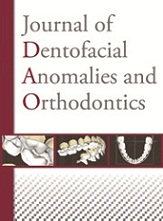Article contents
Spina Bifida and craniocervical junction anomaly. A case report
Published online by Cambridge University Press: 18 October 2010
Abstract
Introduction: Spina bifida is a rare congenital disorder due to a closure anomaly of the neural tube.
Clinical case: A 9 years-old girl presents with lumbar spina bifida aperta and cervical spina bifida occulta. Her case illustrates the importance of orthodontic xrays in the diagnosis of cervical spine malformations.
Discussion: There are two categories of spina bifida. When refered to as aperta, the disorder associates a dorsal vertebral bony gap and an involvement of the spinal cord. A skin pouch can form and include meninges alone (meningocele) or meninges with spinal cord (myelomeningocele). Spina bifida is generally located in the lumbar or sacral regions, and extends over 2-3 vertebrae. On the other hand, the involvement of the cervical spine is often of the occulta type, where the defect is covered by skin and is limited to the bone. This rare condition cannot be ignored by the clinician as the craniocervical junction anomalies induced by this malformation can be associated with C1-C2 instability, as in our case report.
Keywords
- Type
- Case Report
- Information
- Journal of Dentofacial Anomalies and Orthodontics , Volume 11 , Issue 1: Varia , March 2008 , pp. 60 - 67
- Copyright
- © RODF / EDP Sciences
- 2
- Cited by




